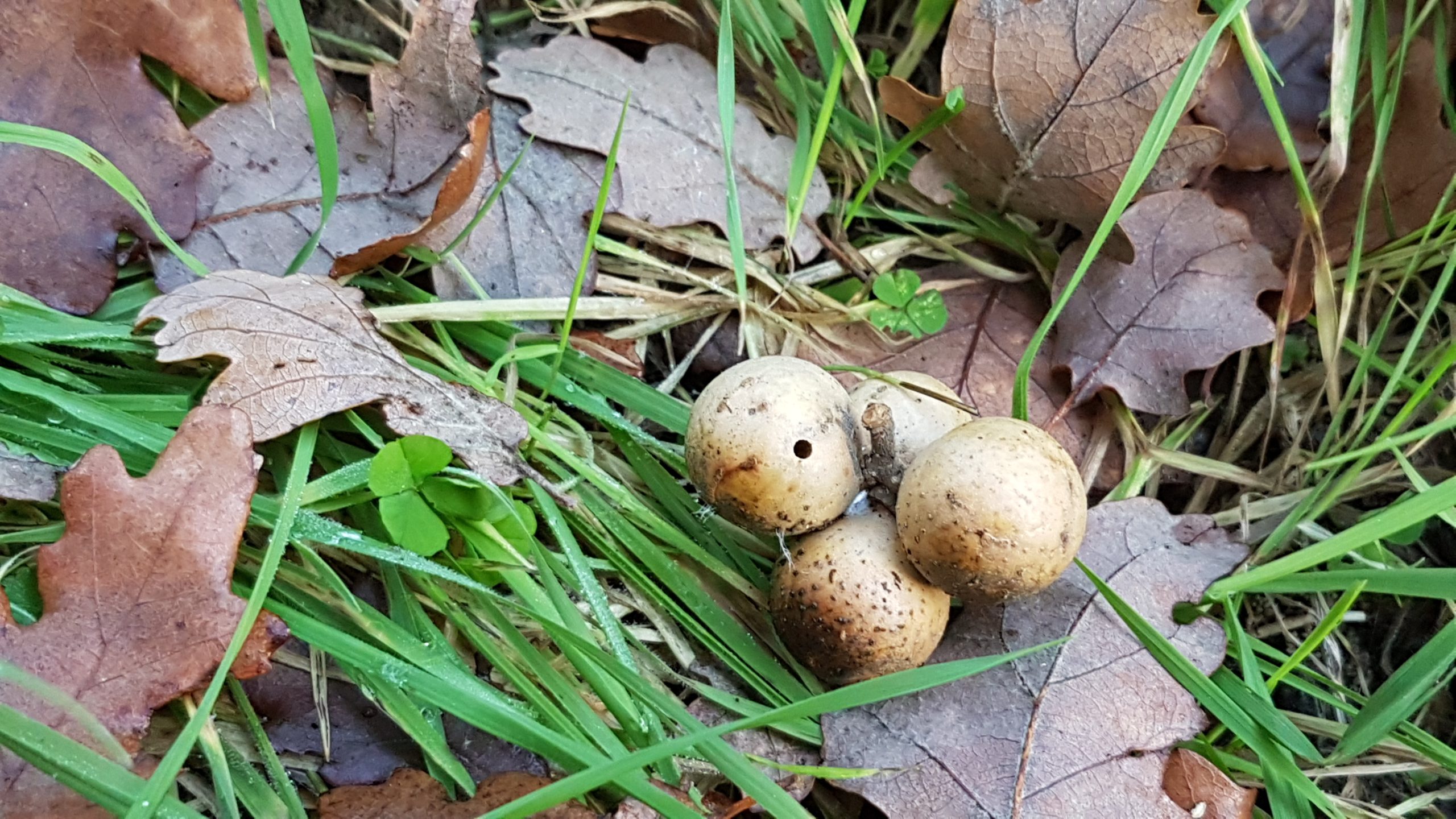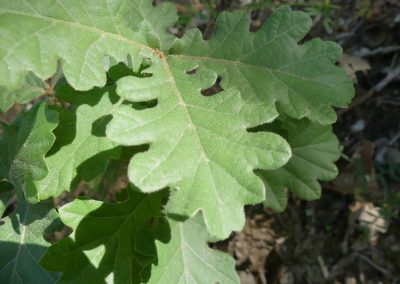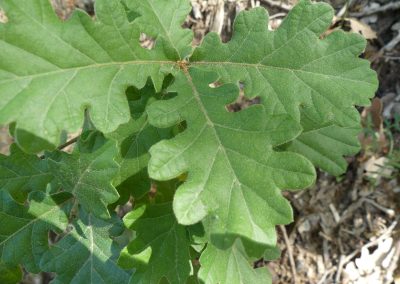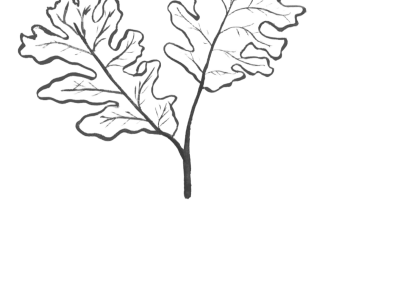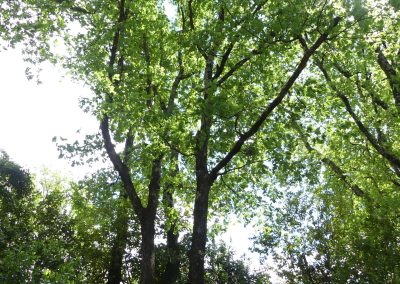Quercus pubescens
Scientific description
Taxon: Quercus pubescens
Class: Magnoliopsida
Subclass: Rosids
Order: Fagales
Family: Fagaceae
Common name: Downy oak
Origin:
Southern Europe, Mediterranean Basin, and Central Europe.
Description:
Deciduous tree 15–25 m tall. Light gray, rough bark becoming fissured. Leaves lobed and soft-hairy, especially below. Lobes rounded; underside lighter. Flowers in spring with hanging male catkins. Medium-sized acorns with scaly cupule. Grows in dry, calcareous habitats, forest edges, and slopes.
Propagation:
By seeds (acorns) after dormancy. Natural seedling growth common.
Ecology:
Adapted to dry, calcareous soils. Forms open forests, often mixed with other oaks. Drought- and wind-tolerant.
Use:
Wood for carpentry, construction, and firewood. Important for local biodiversity.
Threat:
Not globally threatened but locally sensitive to deforestation and habitat fragmentation.
Taxon: Quercus pubescens
Classe: Magnoliopsida
Sous-classe: Rosidae
Ordre: Fagales
Famille: Fagacées
Nom commun: Chêne pubescent
Origine:
Europe méridionale, bassin méditerranéen et Europe centrale.
Description:
Arbre à feuilles caduques 15–25 m. Écorce gris clair, rugueuse, fissurée avec l’âge. Feuilles lobées, poilues surtout dessous. Lobes arrondis, limbe plus clair dessous. Floraison printanière avec chatons mâles pendants. Glands moyens avec cupule écailleuse. Milieux secs, calcaires, lisières de forêt et pentes.
Multiplication:
Par graines (glands) après dormance. Semis naturel fréquent.
Écologie:
Adapté aux sols calcaires secs. Forme des forêts clairsemées, souvent mélangées à d’autres chênes. Résistant à la sécheresse et au vent.
Utilisation:
Bois pour menuiserie, construction et chauffage. Important pour la biodiversité locale.
Menaces:
Non menacé globalement, mais sensible localement à la déforestation et à la fragmentation des habitats.
Taxon: Quercus pubescens
Clasă: Magnoliopsida
Subclasă: Rosidae
Ordin: Fagales
Familie: Fagaceae
Nume comun: Stejar pufos
Origine:
Sudul Europei, Bazinul Mediteranean și Europa Centrală.
Descriere:
Copac cu frunze căzătoare 15–25 m. Scoarță gri deschis, aspră și crăpată cu vârsta. Frunze lobate, acoperite cu peri fini mai ales dedesubt. Lobii rotunjiți, partea inferioară mai deschisă. Înflorire primăvara, mătăsuri masculine pendule. Ghinde medii cu cupulă solzoasă. Crește în medii uscate, calcaroase, la marginea pădurilor și pe pante.
Propagare:
Prin semințe (ghinde) după repaus. Răsărirea naturală frecventă.
Ecologie:
Adaptat la soluri calcaroase și uscate. Formează păduri deschise, adesea amestec cu alți stejari. Rezistent la secetă și vânt.
Utilizare:
Lemn pentru tâmplărie, construcții și foc. Important pentru biodiversitatea locală.
Amenințări:
Nu este amenințat global, dar sensibil local la defrișări și fragmentarea habitatelor.
Ταξινόμηση: Quercus pubescens
Κλάση: Magnoliopsida
Υποκλάση: Rosidae
Τάξη: Fagales
Οικογένεια: Fagaceae
Κοινή ονομασία: Τραχύς δρυς
Προέλευση:
Νότια Ευρώπη, Μεσογειακή λεκάνη και Κεντρική Ευρώπη.
Περιγραφή:
Φυλλοβόλο δέντρο 15–25 μ. Ανοιχτό γκρι τραχύς φλοιός, ρηγματωμένος με την ηλικία. Φύλλα λοβωτά, με απαλό τρίχωμα κυρίως στην κάτω πλευρά. Λοβοί στρογγυλεμένοι, κάτω όψη φωτεινότερη. Άνθη την άνοιξη με κρεμαστές αρσενικές ταξιανθίες. Βελανίδια μεσαίου μεγέθους με φολιδωτό κάλυκα. Αναπτύσσεται σε ξηρά, ασβεστολιθικά εδάφη, σε όρια δασών ή πλαγιές.
Διάδοση:
Με βελανίδια που βλασταίνουν μετά από περίοδο λήθαργου. Φυσική αναπαραγωγή συχνή.
Οικολογία:
Προσαρμοσμένο σε ξηρά, ασβεστολιθικά εδάφη. Δημιουργεί αραιά δάση, συχνά ανάμεικτα με άλλες βελανιδιές. Ανθεκτικό σε ξηρασία και άνεμο.
Χρήση:
Ξύλο για ξυλουργική, κατασκευή και καυσόξυλο. Σημαντικό για τη τοπική βιοποικιλότητα.
Απειλή:
Δεν απειλείται παγκοσμίως, αλλά τοπικά ευαίσθητο σε αποψίλωση και κατακερματισμό οικοτόπων.
Creative writing inspired by Quercus pubescens
The Pubescent oak
At the edge of a small village, there was a pubescent oak. The villagers used to say that anyone who ate its fruit would be granted a wish.
One day, a poor girl named Léa asked for a house for her family. The next day, she found a small house built next to the oak tree! Another day, a boy asked for a bicycle to get around, and the oak gave it to him. Every time someone asked the oak for something, it lost an acorn, so after a while, the oak ran out of acorns, as dozens of people passed by and made wishes every day.
A wise old man passed through the village and advised the villagers not to be greedy and, instead of making wishes, to help each other with deeds. Over time, the villagers learned to rely on their own strength and that of their neighbors, not on a magic oak tree. Gradually, the oak began to produce acorns again to feed the local squirrels, who had been starving for so long that it bore no fruit.
A villager, thinking of the old man's words, decided to plant many oak trees throughout the village so that the squirrels would have fruit in abundance. Since then, the oak has been considered sacred, symbolizing strength and endurance. And this village in particular has the oak as its protector.


